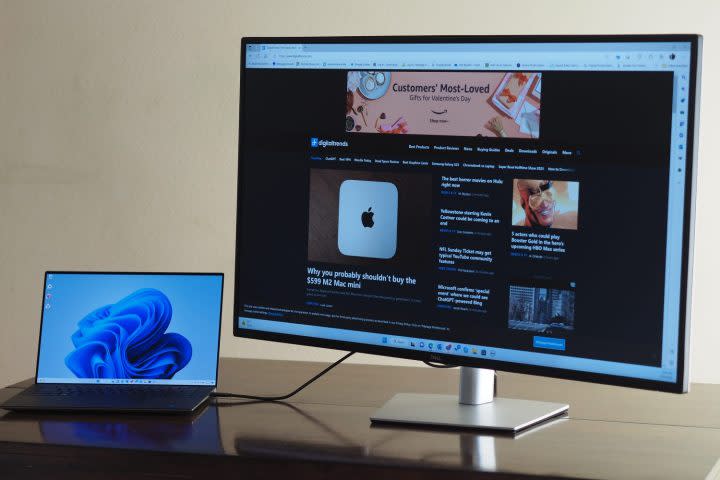Intel’s new Thunderbolt feature ‘fundamentally changes’ how you use two PCs

Intel is finally leveraging its Thunderbolt platform to give you a direct connection between two of your PCs. Thunderbolt Share, a new feature launching today through some Thunderbolt 4 and 5 PCs and accessories, allows you to share files, use the same peripherals, and sync your data across two different systems — and all with a single cable.
There are a few different ways to set this up. Most obviously, you can connect two PCs and a single monitor to a Thunderbolt dock, or connect two PCs through a Thunderbolt monitor. The more unique advantage with Thunderbolt Share is a daisy-chain setup. You can connect two Thunderbolt PCs directly to each other and pass everything through to your monitor.

It’s not difficult to share peripherals and even copy files between multiple PCs if you already have a Thunderbolt dock or monitor. The fact that you can connect two PCs directly is a bit of magic, however.
It doesn’t work automatically. Thunderbolt Share is an application that will connect the two PCs together, and Intel is careful to note that you need Thunderbolt support on both ends of the cable — regular USB-C won’t work. However, only one device needs Thunderbolt Share support. If you have a Thunderbolt 5 or 4 port, it will work as long as at least one device in the chain supports Thunderbolt Share.
From there, you can only choose to do one thing at a time. There are four options in the app:
Share peripherals across two computers
Drag and drop files across two computers
Sync files across two computers
Transfer data from an old computer to a new one
You can do all of this through various different methods now, some of which are more convenient — a KVM switch for your monitor comes to mind. Thunderbolt Share stands out by condensing all of this functionality into one spot with a single cable. On top of that, it’s using a cable, so you don’t have to worry about your security like when transferring files over a network, and you’re getting the full speed and bandwidth of Thunderbolt.

There are some pretty clear downsides to Thunderbolt Share, however, at least right now. For starters, it only works on PC. That shouldn’t come as much of a surprise. The more pressing issue is screen sharing.
When sharing peripherals, Thunderbolt Share will stream the display of one of your PCs to your main display. This appears in a window, and it’s limited to 1080p at up to 60 frames per second. Even in a work setting, that’s fairly low. Modern monitors are pushing to higher resolutions and refresh rates, even if you don’t use them for gaming.
Even with those issues, it’s clear this is just the first iteration of Thunderbolt Share, and the feature will likely be updated as new versions of Thunderbolt are released. In order to unlock the feature, you’ll need a compatible accessory. Intel says companies like MSI, Lenovo, Razer, Acer, Belkin, and Kensington will have PCs and accessories available this year.

